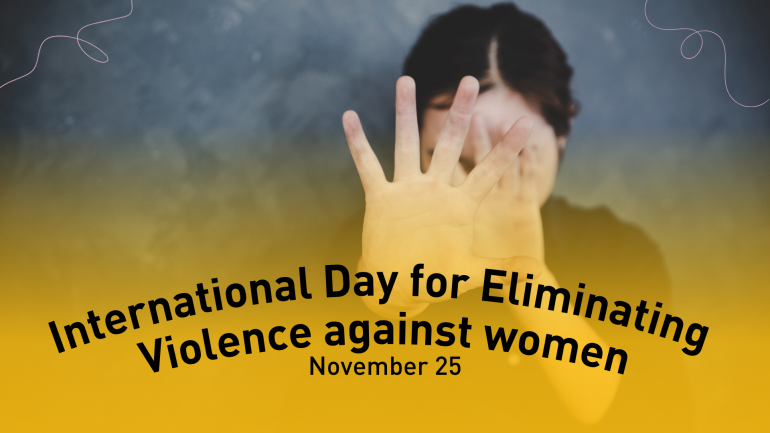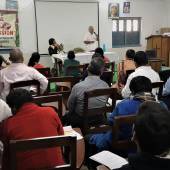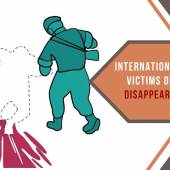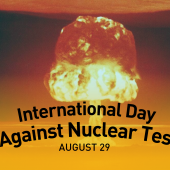International Day for Eliminating Violence against women

Around the world, about 1 in 3 (30%) women experience physical and/or sexual violence, usually by their intimate partners.
Every year the International day for the elimination of violence against women is celebrated on November 25.
Women's rights activists have observed 25 November as a day against gender-based violence since 1981.
This date is commemorated to honour the Mirabal sisters, three Dominican political activists brutally murdered by Rafael Trujillo (1930-1961).
Resolution 48/104 adopted by the UN General Assembly on December 20, 1993, laid the groundwork for eliminating violence against women and girls around the world.
Finally, on February 7, 2000, the General Assembly adopted resolution 54/134, officially designating 25 November as the International Day for the elimination of violence against Women.
During that celebration, governments, international organizations, and non-governmental organizations are invited to participate in activities that would raise public awareness of the issue.
UNiTE to End Violence against Women, an initiative launched in 2008, was another bold step in the right direction.
It aims to raise public awareness of the issue and increase resources and policymaking to end violence against women and girls.
As of now, only two out of three countries have outlawed domestic violence, while 37 countries still do not prosecute rape perpetrators who are married to or eventually marry the victim, and 49 countries do not currently have domestic violence laws.
Ending violence against women is possible, but only if we act together, now.
The World Health Organization plays a key role in addressing violence against women as a problem of public health, gender equality, and human rights.
All countries and cultures are under pressure to act to promote a life free from all forms of violence and coercion for women. Global estimates are worrying:
- Around the world, about one in three (30%) women experience physical and/or sexual violence, usually by their intimate partners.
- Almost one in four (24%) adolescent girls aged 15-19 who have had an intimate relationship have experienced physical violence or sexual abuse.
Violence affects women's physical, mental, sexual, and reproductive health.
Why we need to eliminate violence against women
In today's world, violence against women and girls (VAWG) remains one of the most widespread, persistent, and devastating human rights violations because of its impunity, silence, stigma, and shame.
In general terms, it manifests itself in physical, sexual and psychological forms, encompassing:
Intimate partner violence (battering, psychological abuse, marital rape, femicide), Sexual violence and harassment (rape, forced sexual acts, unwanted sexual advances, child sexual abuse, forced marriage, street harassment, stalking, cyber-harassment), human trafficking (slavery, sexual exploitation), female genital mutilation and child marriage.
In the Declaration on the Elimination of Violence Against Women, issued by the United Nations General Assembly in 1993, violence against women is defined as “any act of gender-based violence that inflicts physical, sexual or psychological harm or suffering on women, such as threats of such acts, coercion, or arbitrary deprivation of liberty, whether in public or private life."
The adverse psychological, sexual and reproductive health consequences of VAWG affect women at all stages of their lives. As an example, early educational disadvantages are not just the main obstacle to universal schooling and the right to education for girls; further down the line, they also limit access to higher education for women and even lead to limited employment opportunities.
It is important to note that while gender-based violence can affect anyone, it is particularly prevalent among women and girls - for instance, young girls and older women, lesbians, bisexuals, transgenders, intersex women, migrants and refugees, indigenous women and ethnic minorities, HIV-positive and disabled women, and those experiencing humanitarian crises.
Violence against women continues to be an obstacle to achieving equality, development, and peace as well as to the fulfilment of the human rights of women and girls.
Our responsibilities:
- To effectively prevent and respond to violence against women, we need reliable, comparable data. Besides strengthening data, WHO is also administering a global database on the prevalence of violence against women to inform policies and programs
- To respond to violence against women, health systems must train health providers and improve their readiness to provide quality care. Health sectors can achieve this by using WHO's tools, such as a resource package for strengthening country health systems, a curriculum for training health professionals, a guide for integrating VAW response content into preservice training for doctors, nurses, and midwives, and an online facilitated training curriculum in situations where in-person training is not possible.
- As part of its conflict prevention work, WHO works with partners around the world to promote a health system emergency response to violence against women and girls. Strengthen health sector responses to rape and intimate partner violence in humanitarian emergencies, where mass displacement and the breakdown of social protections pose a greater risk to women and children, and access to survivors-centred, high-quality care and services is essential.
Radio Veritas Asia (RVA), a media platform of the Catholic Church, aims to share Christ. RVA started in 1969 as a continental Catholic radio station to serve Asian countries in their respective local language, thus earning the tag “the Voice of Asian Christianity.” Responding to the emerging context, RVA embraced media platforms to connect with the global Asian audience via its 21 language websites and various social media platforms.














